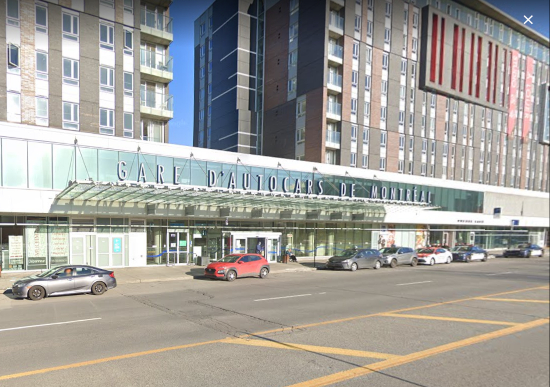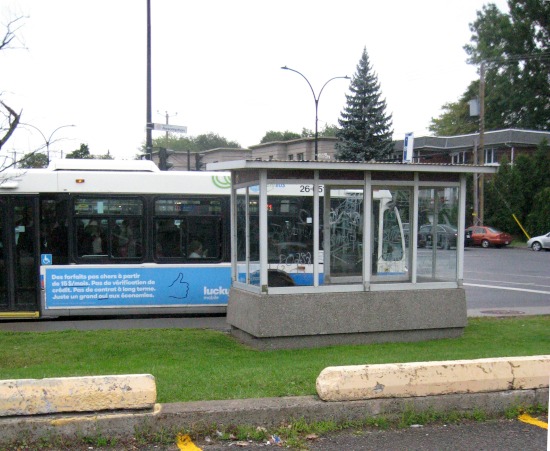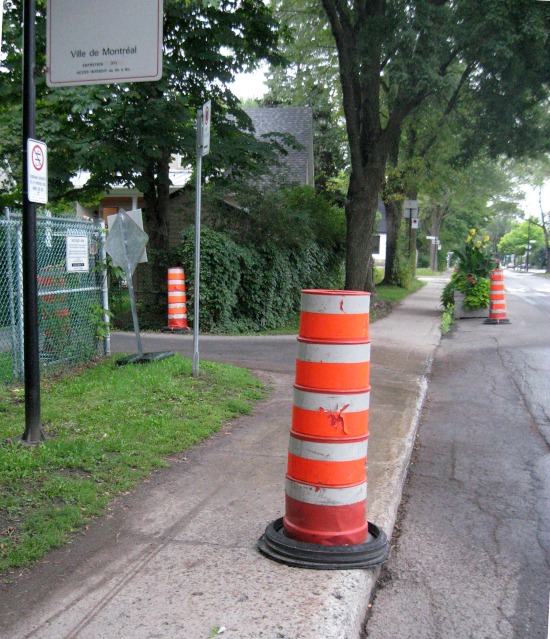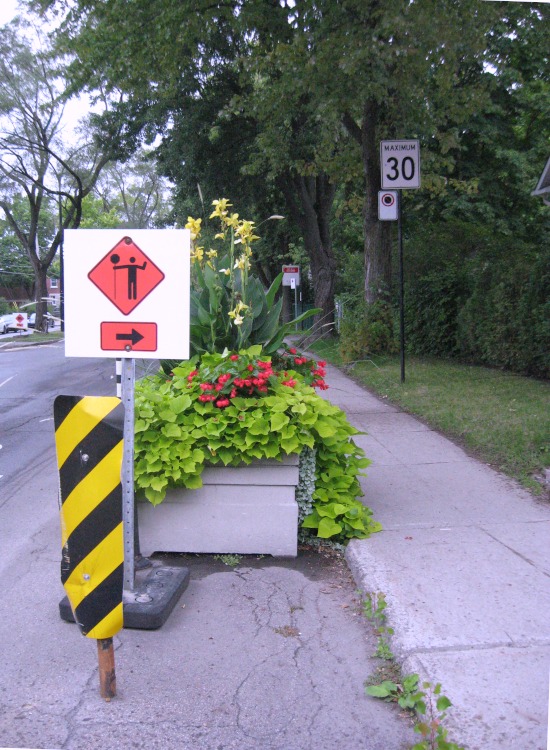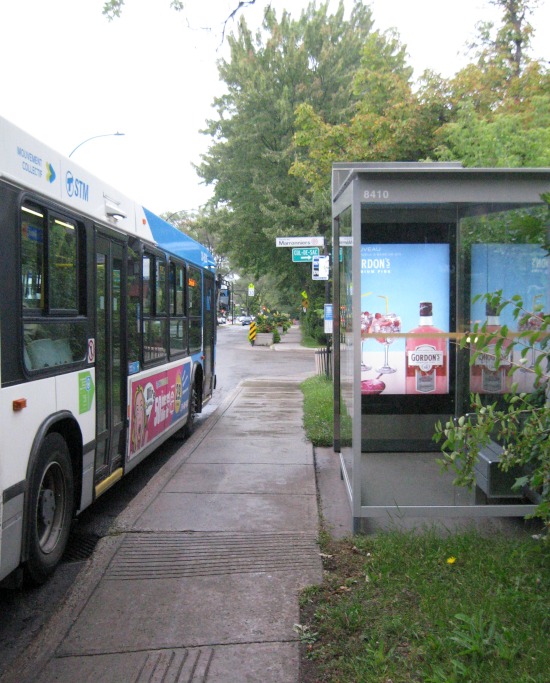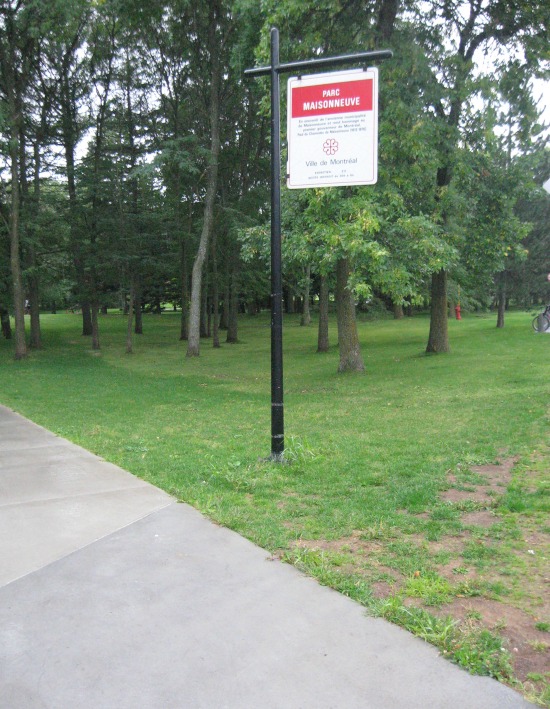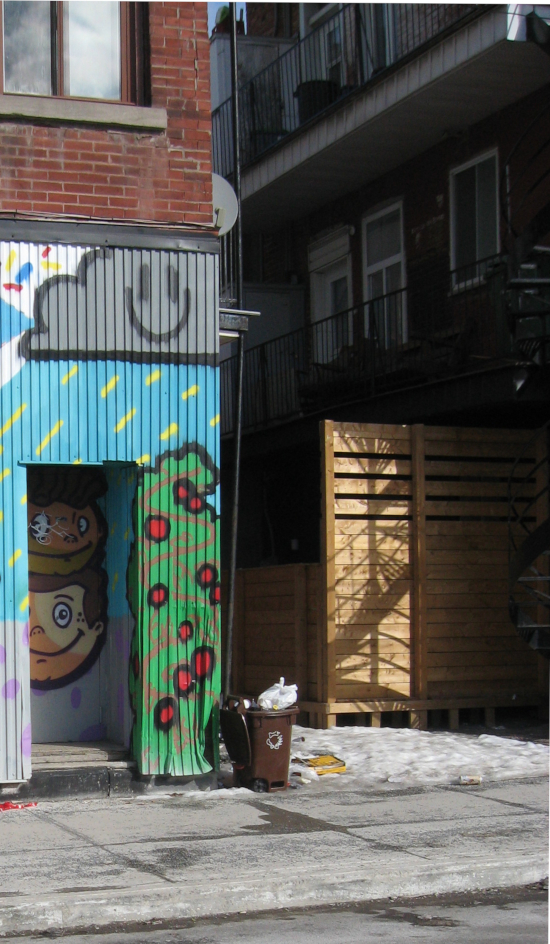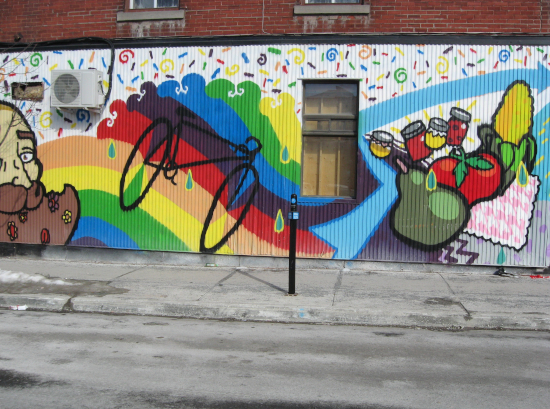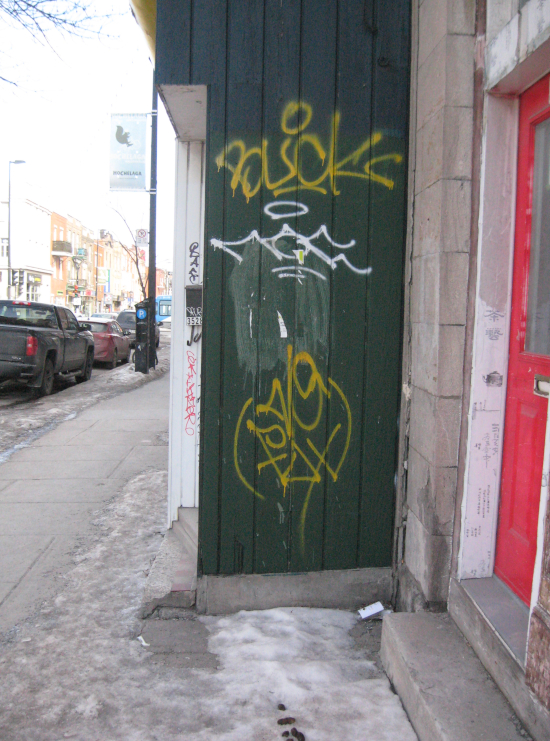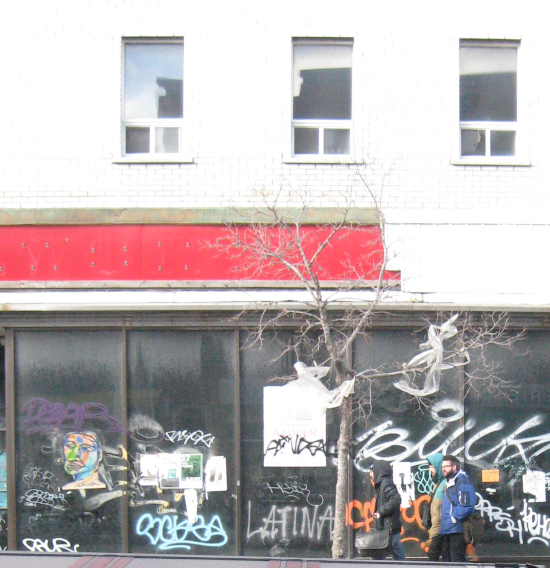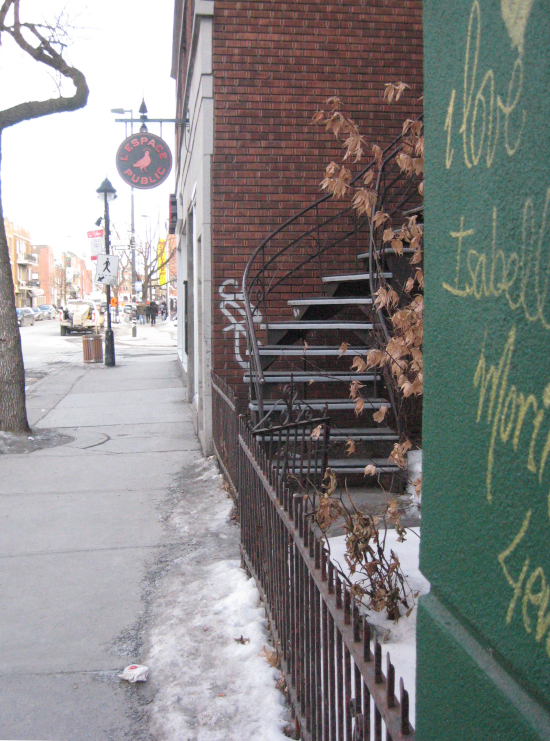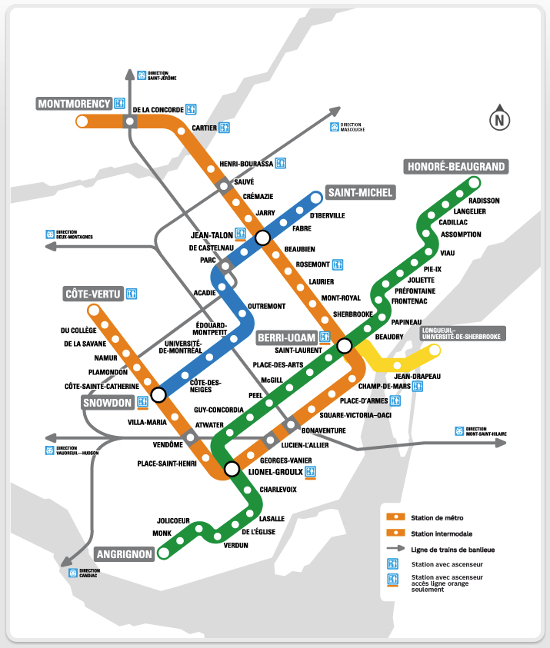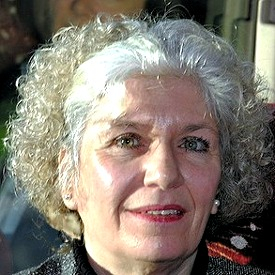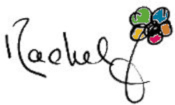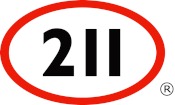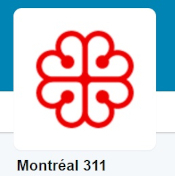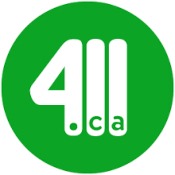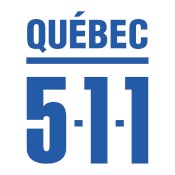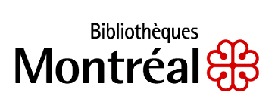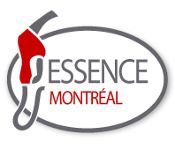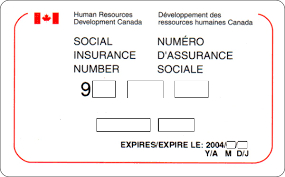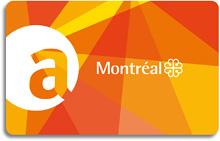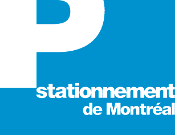Montreal Metro Orange Line 1
The STM Montreal Metro Orange Line 1 as well as the blue, the green and the yellow lines each give access to the STM photo studio services - 1755 Berri Street. However, and in light of a pandemic situation that is still around, the STM Customer Service wants you to ...
- make an appointment before going to the studio photo - the studio operates at reduced capacity to allow compliance with physical distancing rules;
- wear a face covering while on site (and remove it briefly when the photo is taken) - if you think you have COVID-19, stay home;
- keep your hands clean and use the hand sanitizer provided at the studio entrance;
- bring your own pencil to avoid sharing objects on site.
Montmorency - Metro Orange Line
Opened: April 2007. Origin of the Name: The Collège Montmorency is named in honour of François-Xavier de Montmorency-Laval de Montigny (1623-1708), first bishop of Québec and a former lord of the ancient seigneury of île Jésus (now called Laval).
Specific Aspect: An underground métro workshop and garage are located in the vicinity of the station.
Entrance-Exit: Lucien-Paiement Street and Jacques-Tétreault Street. Bicycle Parking Space: 263 bicycles stands are available outside the station in Ville de Laval.
de la Concorde - Metro Orange Line 1
Opened: April 2007. Origin of the Name: boulevard de la Concorde refers to place de la Concorde, one of the largest public places in Paris.
Specific Aspect: With the exception of stations on the Yellow line, station Cartier and station de la Concorde are separated by the longest distance (2.1 km).
Entrance-Exit: de la Condorde Ouest Boulevard and Léo-Lacombe Avenue with an elevator access. Bicycle Parking Space: 85 bicycle stands are available outside the station in Laval.
Cartier - Montreal Metro Orange Line
Opened: April 2007. Origin of the Name: boulevard Cartier, named in honor of Sir George-Étienne Cartier (1814-1873), co-premier of the united province of Canada from 1857 to 1862 who, in 1867, became one of the 36 Fathers of Confederation.
Specific Aspect: The Cartier station was built on a creek, a small river and an ancient branch of the Rivière des Prairies nearby.
Entrance-Exit: Cartier Boulevard West. Bicycle Parking Space: 59 bicycle stands are available outside the station in Ville de Laval.
Henri-Bourassa - Metro Orange Line 1
Opened: October 1966. Origin of the Name: the boulevard and the station are named after Henri Bourassa (1868-1952), journalist, politician, fervent French-Canadian nationalist and founder of the newspaper Le Devoir in 1910.
Specific Aspect: The Henri-Bourassa station was the terminus of the Orange line from October 1966 to April 2007 plus, an underground métro garage is located in the vicinity of the station.
Entrance-Exit: Berri Street, Henri-Bourassa Boulevard North, South and East and an elevator access at the south corner of Henri-Bourassa and Lajeunesse Street. Bicycle Parking Space: 217 bicycle stands are available outside the station.
Sauvé - Metro Orange Line
Opened: October 1966. Origin of the Name: The Sauvé Station first refers to the Sauvé street and then to a local landowner in 1912.
Specific Aspect: Two easily identifiable orange shuttle stops are located outside the Sauvé station. Orange being the color of the Sauvé métro line.
Entrance-Exit: Sauvé Street North and South. Bicycle Parking Space: 105 bicycle stands are available outside the station.
Crémazie - Montreal Metro Orange Line 1
Opened: October 1966. Origin of the Name: the Crémazie boulevard is named after Octave Crémazie (1827-1879) poet and one of the founders of the ICQ, the Institut Canadien de Québec in 1848.
Specific Aspect: The Fédération des travailleurs et travailleuses du Québec (FTQ) and the Administrative Center of the Governemnt of Québec are both located nearby.
Entrance-Exit: Crémazie East on both sides of the Boulevard. Bicycle Parking Space: 14 bicycle stands are available outside the station.
Jarry - Metro Orange Line
Opened: October 1966. Origin of the Name: Jarry refers to Stanislas Blégnier dit Jarry père, a farmer and owner of the land on which the street and the metro station are now located.
Specific Aspect: The Jarry station was initially scheduled to be located on Villeray Street.
Entrance-Exit: Jarry Street East. Bicycle Parking Space. 39 bicycle stands are available outside the station.
Jean-Talon - Metro Orange Line 1
Opened: October 1966 (Orange line) and June 1986 (Blue line). Origin of the Name: The Jean-Talon Station and Street is named after Jean Talon (1625-1694), first Intendant of the New France.
Specific Aspect: The Jean-Talon and the Snowdon stations are the only two stations where underground rock walls remained visible.
Entrance-Exit: Berri street, two on Jean-Talon Street East, one with an elevator access and St-Hubert Street. Bicycle Parking Space: 93 bicycle stands are available outside the station.
Beaubien - Montreal Metro Orange Line
Opened: October 1966. Origin of the Name: Beaubien Street and Station are named after Louis Beaubien, journalist, politician, landowner and business man born in 1837 in Montreal in 1837.
Specific Aspect: Artist Claude Vermette created the station's wall finishes.
Entrance-Exit: de Châteaubriand Avenue. Bicycle Parking Space: 42 bicycle stands are available outside the station.
Rosemont - Metro Orange Line 1
Opened: October 1966. Origin of the Name: Rosemont is the name of a former village established by Ucal-Henri Dandurand and named after his mother born Rose Phillips.
Specific Aspect: The Saint-Denis bus garage is located in front of the Rosemont station.
Entrance-Exit: Rosemont Boulevard. Bicycle Parking Space: 72 bicycle stands are available outside the station.
Metro Orange Line 2 / Metro Orange Line 3
Montreal Kits - Montreal Metro Orange Line 1
Disclaimer Keep in Touch! Montreal Tourism
Privacy Policy Rachel Louise Barry Sitemap
Montreal Kits © All Rights Reserved 2018-2024
The information provided by Montreal Kits is informational only and has no legal value.







